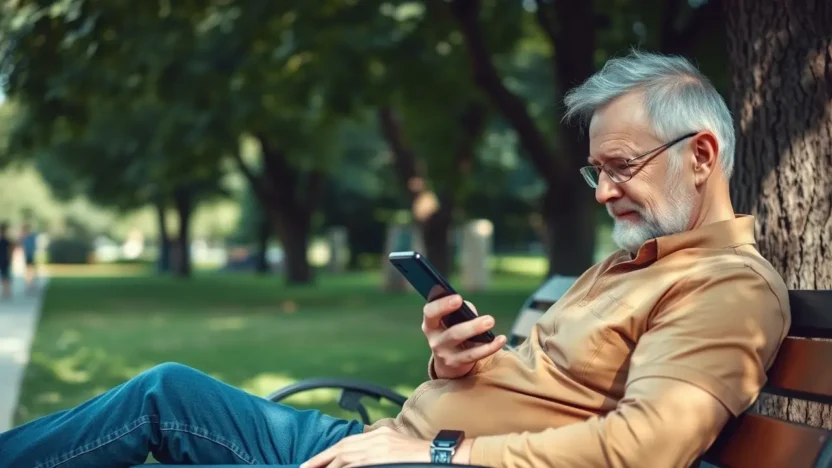In today’s fast-paced world, smartphones have become indispensable tools for staying connected, managing tasks, and even keeping entertained. For men in their early 50s, these devices are more than just gadgets—they’re lifelines that help navigate both personal and professional responsibilities. However, there’s one persistent challenge: battery life. Running out of juice at an inconvenient moment can disrupt your day and leave you feeling disconnected from what matters most. The good news is that there are practical steps you can take to maximize your smartphone’s battery performance. In this article, we’ll explore actionable tips, dispel common myths, and provide insights tailored specifically for your lifestyle and needs.
Understanding Your Smartphone’s Battery
Before diving into specific strategies, it’s important to understand how smartphone batteries work. Most modern devices use lithium-ion batteries, which are known for their efficiency and longevity compared to older technologies. Despite advancements, these batteries still degrade over time due to factors like charging habits, temperature exposure, and usage patterns. A key takeaway here is that while no battery lasts forever, proper care can significantly extend its lifespan.
“The way you charge and use your phone has a direct impact on its battery health,” says tech expert John Smith. “Small changes in daily habits can lead to big improvements.”
One misconception about smartphone batteries is that they need to be fully drained before recharging. This was true for older nickel-based batteries but not for lithium-ion ones. In fact, frequent partial charges are better for maintaining battery health. Let’s delve deeper into some effective ways to make your battery last longer throughout the day.

Optimize Your Phone Settings for Better Battery Performance
Your smartphone comes packed with features designed to enhance user experience, but many of these conveniences consume significant amounts of power. By tweaking certain settings, you can strike a balance between functionality and energy efficiency.
Adjust Screen Brightness and Timeout
The display is often the biggest culprit when it comes to draining your battery. Keeping your screen brightness at maximum or leaving it on for extended periods can quickly deplete your charge. To conserve power, consider lowering the brightness level or enabling auto-brightness, which adjusts based on ambient light conditions. Additionally, reduce the screen timeout duration so your phone locks faster after periods of inactivity.
- Enable Auto-Brightness: Go to Settings > Display & Brightness > toggle on Auto-Brightness.
- Shorten Screen Timeout: Navigate to Settings > Display > Sleep/Auto-Lock and choose a shorter interval (e.g., 30 seconds).
Turn Off Unnecessary Features
Features such as Wi-Fi, Bluetooth, GPS, and mobile data are incredibly useful but also major battery drainers if left running unnecessarily. If you’re not actively using them, turn them off. For example, if you’re indoors and don’t need internet access, disable Wi-Fi and mobile data until needed again.
Another feature worth mentioning is location services. While apps like maps rely on GPS for navigation, constant tracking by other apps can drain your battery unnecessarily. You can manage app permissions under Location Services in your phone’s settings.
| Feature | Impact on Battery Life | Recommended Action |
|---|---|---|
| Wi-Fi | High | Disable when not in use |
| Bluetooth | Moderate | Turn off unless pairing devices |
| GPS/Location | High | Limit background app access |
| Mobile Data | High | Use only when necessary |
Use Battery-Saving Modes
Most smartphones come equipped with built-in battery-saving modes that automatically adjust settings to minimize power consumption. These modes typically limit background activity, reduce performance, and dim the screen. Activating this mode during times of low battery or when you know you won’t have access to a charger can buy you extra hours of usage.
Monitor and Manage App Usage
Apps are another major contributor to battery drain, especially those running in the background. Some apps continue to operate even when you’re not actively using them, consuming resources without your knowledge. Regularly reviewing your app usage can help identify culprits and optimize your phone’s performance.
Check Battery Usage Statistics
Both Android and iOS offer detailed breakdowns of which apps are consuming the most power. Accessing this information allows you to pinpoint problematic apps and decide whether to uninstall, restrict, or adjust their settings.
On iPhones, go to Settings > Battery to view a list of apps ranked by their energy consumption. For Android users, head to Settings > Battery > Battery Usage for similar insights. Once identified, you can take action accordingly.
Limit Background Activity
Many apps refresh content in the background to ensure they stay up-to-date. While convenient, this process uses both data and battery life. To mitigate this, restrict background app refresh for non-essential applications.
- On iOS: Go to Settings > General > Background App Refresh and toggle off unnecessary apps.
- On Android: Navigate to Settings > Apps & Notifications > [App Name] > Battery > Background Restriction.

Adopt Smart Charging Habits
How you charge your phone plays a critical role in preserving its battery health over time. Here are some best practices to keep in mind:
Avoid Overcharging
Leaving your phone plugged in overnight might seem harmless, but doing so repeatedly can stress the battery and accelerate degradation. Instead, aim to unplug your device once it reaches 80–90% charge. Alternatively, invest in smart chargers that stop delivering current once the battery is full.
Keep It Cool
Heat is one of the worst enemies of lithium-ion batteries. Exposing your phone to high temperatures—whether through direct sunlight, hot environments, or intensive gaming sessions—can permanently damage its capacity. Always store your device in cool, shaded areas and avoid using it while charging, as this generates additional heat.
Frequently Asked Questions About Smartphone Battery Life
To address common concerns, here are answers to frequently asked questions regarding smartphone batteries:
Q: Does turning my phone off occasionally help preserve battery life?
A: Yes, powering down your device periodically gives the hardware a chance to reset and can improve overall efficiency.
Keep reading to discover more tips and insights on extending your smartphone’s battery life.
Q: Can I replace my phone’s battery myself?
A: It depends on the model. Many modern phones have non-removable batteries, requiring professional replacement. Always consult the manufacturer’s guidelines or visit an authorized service center.
Q: Do battery cases really work?
A: Battery cases can provide additional power, but quality varies widely. Choose reputable brands to avoid potential safety risks.
Conclusion
Extending your smartphone’s battery life doesn’t require drastic measures; small adjustments to your daily routine can yield impressive results. From optimizing settings and monitoring app usage to adopting smart charging habits, every step counts toward maximizing performance. Remember, taking proactive steps now will save you frustration later and ensure your device remains reliable for years to come.
For men in their early 50s who value productivity and connectivity, these strategies offer practical solutions to stay powered up and engaged. Start implementing these tips today, and enjoy peace of mind knowing your phone will be ready whenever you need it.



